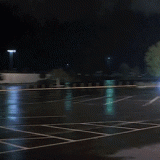
GPS is now a mainstay of daily life, helping us with navigation, tracking, mapping, and timing across a broad spectrum of applications. But it does have a few shortcomings, most notably not being able to pass through buildings, rocks, or water. That’s why Japanese researchers have developed an alternative wireless navigation system that relies on cosmic rays, or muons, instead of radio waves, according to a new paper published in the journal iScience. The team has conducted its first successful test, and the system could one day be used by search and rescue teams, for example, to guide robots underwater or to help autonomous vehicles navigate underground.
“Cosmic-ray muons fall equally across the Earth and always travel at the same speed regardless of what matter they traverse, penetrating even kilometers of rock,” said co-author Hiroyuki Tanaka of Muographix at the University of Tokyo in Japan. “Now, by using muons, we have developed a new kind of GPS, which we have called the muometric positioning system (muPS), which works underground, indoors and underwater.”
As previously reported, there is a long history of using muons to image archaeological structures, a process made easier because cosmic rays provide a steady supply of these particles. Muons are also used to hunt for illegally transported nuclear materials at border crossings and to monitor active volcanoes in hopes of detecting when they might erupt. In 2008, scientists at the University of Texas, Austin, repurposed old muon detectors to search for possible hidden Mayan ruins in Belize. Physicists at Los Alamos National Laboratory have been developing portable versions of muon imaging systems to unlock the construction secrets of the dome (Il Duomo) atop the Cathedral of St. Mary of the Flower in Florence, Italy, designed by Filippo Brunelleschi in the early 15th century.
In 2016, scientists using muon imaging picked up signals indicating a hidden corridor behind the famous chevron blocks on the north face of the Great Pyramid of Giza in Egypt. The following year, the same team detected a mysterious void in another area of the pyramid, believing it could be a hidden chamber, which was subsequently mapped out using two different muon imaging methods. And just last month, scientists used muon imaging to discover a previously hidden chamber at the ruins of the ancient necropolis of Neapolis, some 10 meters (about 33 feet) below modern-day Naples, Italy…
Read the rest at: Scientists conduct first test of a wireless cosmic ray navigation system











Recent Comments